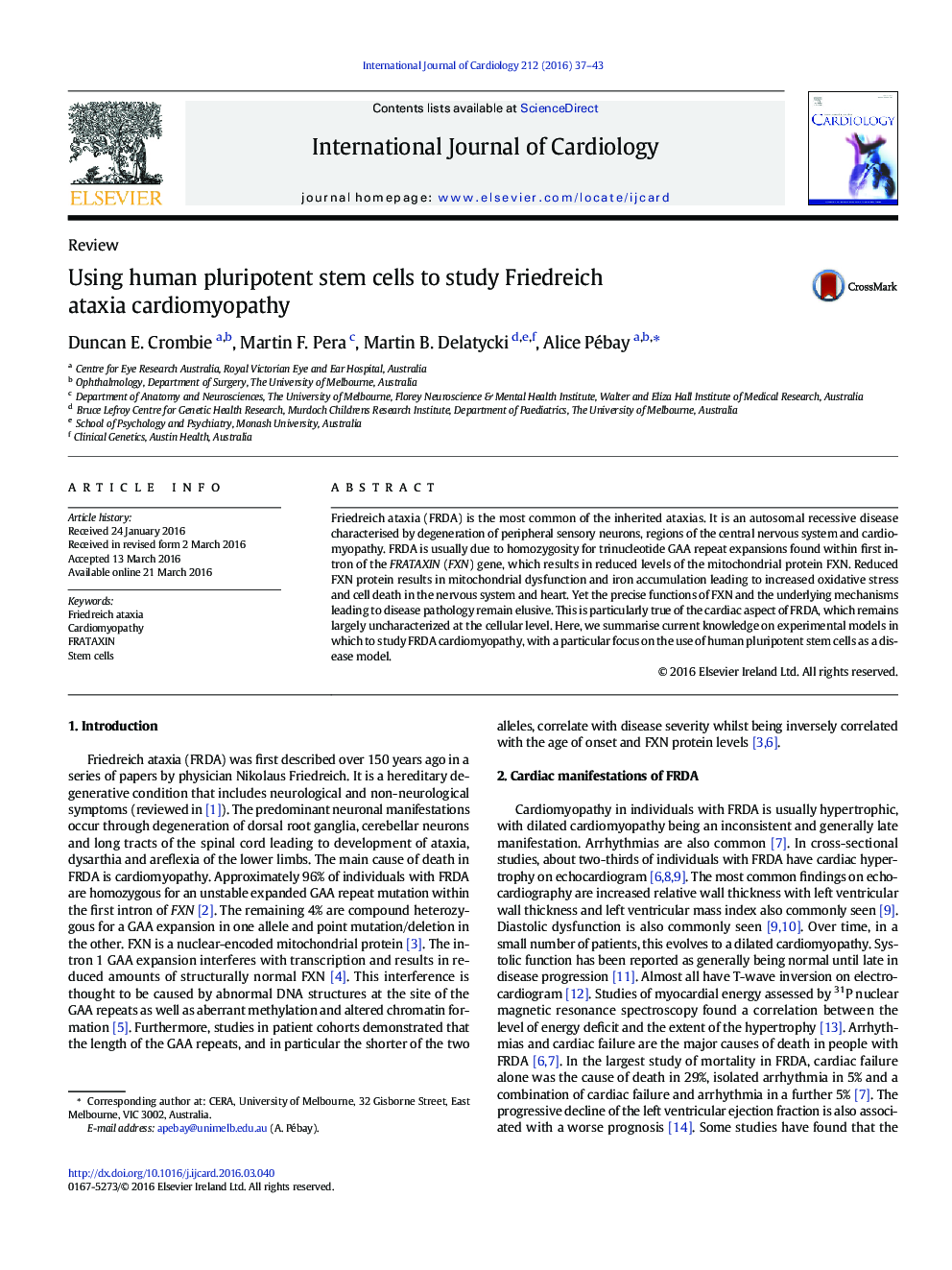| کد مقاله | کد نشریه | سال انتشار | مقاله انگلیسی | نسخه تمام متن |
|---|---|---|---|---|
| 5964357 | 1576137 | 2016 | 7 صفحه PDF | دانلود رایگان |
- We discuss Friedreich Ataxia cardiomyopathy.
- We summarise experimental models to study Friedreich Ataxia cardiomyopathy.
- We focus on the use of human pluripotent stem cells as a disease model.
Friedreich ataxia (FRDA) is the most common of the inherited ataxias. It is an autosomal recessive disease characterised by degeneration of peripheral sensory neurons, regions of the central nervous system and cardiomyopathy. FRDA is usually due to homozygosity for trinucleotide GAA repeat expansions found within first intron of the FRATAXIN (FXN) gene, which results in reduced levels of the mitochondrial protein FXN. Reduced FXN protein results in mitochondrial dysfunction and iron accumulation leading to increased oxidative stress and cell death in the nervous system and heart. Yet the precise functions of FXN and the underlying mechanisms leading to disease pathology remain elusive. This is particularly true of the cardiac aspect of FRDA, which remains largely uncharacterized at the cellular level. Here, we summarise current knowledge on experimental models in which to study FRDA cardiomyopathy, with a particular focus on the use of human pluripotent stem cells as a disease model.
Journal: International Journal of Cardiology - Volume 212, 1 June 2016, Pages 37-43
